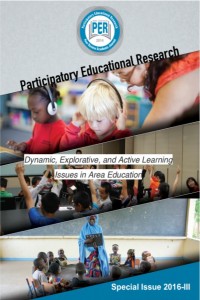Abstract
References
- Akalan, G. (2000). Gravür, Ankara: Kaleseramik Sanat Yayınları
- Aslıer, M. (1992). Grafik sanatlar tarih ve yorumlar, Marmara Üniversitesi Güzel Sanatlar Fakültesi Yayınları, 2, p.50
- Atar, A. (1993). Özgün Baskıresim Teknikleri. Sanat ve iş teknolojisi (ss.82-98). Eskişehir: Anadolu Üniversitesi Açıköğretim Fakültesi Yayınları
- Atar, A. (1995). Başlangıcından günümüze taşbaskı, Eskişehir: Anadolu Üniversitesi Yayınları
- Grabowski, B. Fick, B. (2012). Baskıresim kapsamlı materyaller & teknikler rehberi. İzmir: Karakalem Kitabevi Yayınları.
- İlbeyli, G.(1994). Baskıresim. Anadolu Sanat, 2, p.58.
- https://tr.wikipedia.org/wiki/Dosya:SantaCruz-CuevaManos-P2210651b.jpg, 20.08.2016)
- http://alchetron.com/Alois-Senefelder-1105360-W , 21.08.2016
Abstract
Handprints which is known that made on the cave
wall thousands of years before, footprints left by our feet in the seaside or
fingerprints that we used instead of signatures in the past are just a few of
the actions that a signing and reproduction of human being. It is seen that the
reproduction action is developing, expanding and specializing in time. Especially
the after the Industrial Revolution, printmaking area comes in an important
point, associated with the increase of technology development and material
diversity. Multiplication techniques like posters, stamps and photocopying has
become part of our daily lives. Every technological innovation emerged is
affects also printmaking significantly like in all fields. In particular, the
acceleration of variety of materials is forced to emerge new techniques of
printmaking. The newest printmaking techniques has variations from traditional
printmaking techniques. It is required to reveal the variations. "Kitchen
lithography" is one of these new (alternative) printmaking techniques.
Comparison of the traditional lithography and kitchen lithography which could
be an alternative to traditional lithography is done practically. These
differences have been presented in the paper by putting them into writing. As a
result of this study, it is seen that unlike the traditional lithography,
kitchen lithography can be applied without harmful chemicals (acid, thinner
types, etc.). Compared to traditional lithography in this technique results are
received faster and students or artists doesn't have to work in a specifically
arranged studio. Being cost-efficient and not holding complex process steps are
among other acquired results about kitchen lithography. This technique is
defined that not only by professionals but also be used by amateurs. It is
inferred from the results that kitchen lithography has features that even children
can apply therefore it is expected to it can be used widely.
Keywords
References
- Akalan, G. (2000). Gravür, Ankara: Kaleseramik Sanat Yayınları
- Aslıer, M. (1992). Grafik sanatlar tarih ve yorumlar, Marmara Üniversitesi Güzel Sanatlar Fakültesi Yayınları, 2, p.50
- Atar, A. (1993). Özgün Baskıresim Teknikleri. Sanat ve iş teknolojisi (ss.82-98). Eskişehir: Anadolu Üniversitesi Açıköğretim Fakültesi Yayınları
- Atar, A. (1995). Başlangıcından günümüze taşbaskı, Eskişehir: Anadolu Üniversitesi Yayınları
- Grabowski, B. Fick, B. (2012). Baskıresim kapsamlı materyaller & teknikler rehberi. İzmir: Karakalem Kitabevi Yayınları.
- İlbeyli, G.(1994). Baskıresim. Anadolu Sanat, 2, p.58.
- https://tr.wikipedia.org/wiki/Dosya:SantaCruz-CuevaManos-P2210651b.jpg, 20.08.2016)
- http://alchetron.com/Alois-Senefelder-1105360-W , 21.08.2016
Details
| Primary Language | English |
|---|---|
| Subjects | Studies on Education |
| Journal Section | Research Articles |
| Authors | |
| Publication Date | June 1, 2016 |
| Acceptance Date | November 30, 2016 |
| Published in Issue | Year 2017 Volume: 4 Issue: 1 |



